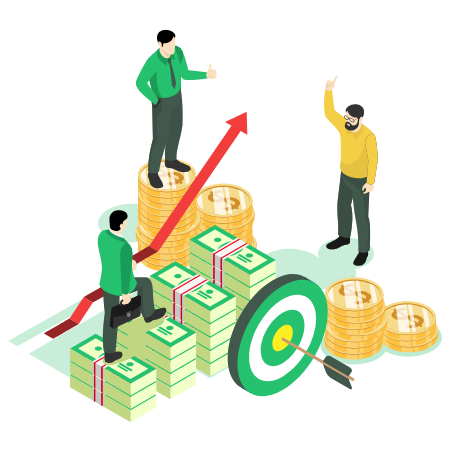Any business, big or small needs to watch its performance periodically to evaluate its success. Even the hospitality industry is not unknown to that fact.
The key performance indicators (KPI), therefore, are used at various levels to determine the overall success of a business. Similarly, hotel KPIs measure a hotel’s performance through several aspects.
We have listed 15 of those hotel KPIs in this blogpost (eBook) which you need to focus on, in order to measure your hotel’s performance at various levels. Along with this, we’ve shared the BEST TIPS and ACTIONABLE STEPS to improve those metrics for your business.
How important are the hotel KPIs?
Well, if you don’t measure it, you can’t improve it.
And it goes without saying that no business wants to be stuck at the same position even for a bit. The KPIs for hotels help you measure your performance — whether you’re profiting from your various activities or incurring an irreversible loss.
All of that can be defined by your hotel KPI.
Additionally, you will also know whether exactly your marketing and performance is lacking, and your strengths and weaknesses once you measure these hotel industry metrics.
Which are the essential key performance indicators for hotels?
While there are numerous key performance indicators for hotels that play a major role in its efficiency, there are a few which you cannot overlook even at the slightest.
List of hotel industry KPIs
I’m sure you must be coming across most of the below mentioned KPIs every other day. But due to little awareness of their importance, they might be neglected.
Let’s go through each one in detail, understand what each of these KPIs stands for in the hotel industry, select the suitable ones for your property and get moving towards expanding your hotel business.
1. Hotel Occupancy Rate
This is the most basic metric for hotel performance measurement. The occupancy rate is the number of total rooms occupied out of the total rooms available in your hotel. Analyse occupancy rate daily, weekly, yearly or monthly to see how well your hotel is performing.
To calculate:
Occupancy Rate = (Number of Occupied Rooms / Total Available Rooms) * 100
Say you have 50 rooms in total, 20 of them are empty and 30 of them are booked. In this case,
Occupancy rate = (20/50)*100 = 60%
How to analyse and improve this KPI?
If you see, the hotel occupancy rate is dependent on the number of bookings you get, and your revenue is dependent on the occupancy.
Basically, you need to increase your number of bookings to grow your occupancy rate and thereby revenue. Your number of bookings can be increased by implementing various hotel revenue management strategies in addition to consistently following strong marketing techniques.
You can also execute various yield management tactics using systems like a booking engine and channel manager to improve your occupancy rate.
2. Average Daily Rate (Hotel ADR)
The average price that a guest pays per room on a specific day is the hotel ADR. This metric helps you access the total room revenue for a specific period versus the total amount of room revenue paid and occupied rooms within the same timeframe.
To calculate:
ADR = Rooms Revenue / Occupied Rooms
For example, if the total revenue earned from 20 occupied rooms are 10000 USD, then the ADR will be: Hotel ADR = 10000/20 = 500 USD
Basically, this hotel KPI indicates your average income per occupied room. Though, occupied rooms here don’t include complimentary rooms, rooms occupied by staff or owner, no-shows and cancelled bookings for which charges are levied.
There’s one more KPI which as an extension to this, which is, ARR – Average Room Rate.
How to analyse and improve this KPI?
Since this hotel metric is connected to the revenue you earn, it is one of the most important ones to measure your hotel performance. The higher this metric goes, the higher is your room revenue.
More or less, it is also connected to the room rates you charge to your guests and the occupancy. If your room rates are higher, you’ll earn higher revenue provided that you get more bookings; which will eventually increase your hotel’s ADR.
To improve this hotel KPI, you need to set a proper pricing strategy for your hotel rooms, upsell, and even offer discounts on extended stays. Here are some best tips to increase your hotel ADR.
3. Revenue Per Available Room (RevPAR)
Hotel RevPAR is a measure of revenue that your rooms have earned over a period of time. This hotel metric does not include other revenue sources like food and beverages, spa, laundry, room service and tours.
To calculate:
RevPAR = Total Room Revenue / Total Rooms Available
AND
RevPAR = Your ADR * Occupancy Percentage
So, let’s say that your total room revenue for today is 20,000 USD, and you have 20 available rooms.
RevPAR = 2000/5 = 400 USD
RevPAR has several other sub-divisions such as:
a. TRevPAR
b. NRevPAR
c. GOPPAR
How to analyse and improve your hotel RevPAR?
RevPAR is a measure of your hotel performance because it varies with market trends, time, guest segment and such likes; hence giving you different snapshots with different criteria. It determines and indicates your capacity to fill the rooms.
It doesn’t take into account the number of rooms, so it is possible that a large property with few filled rooms is making more money even with a lower RevPAR. You can use this KPI to compare your this year’s performance with last year and track your growth.
This hotel KPI is directly proportional to your occupancy rate, so higher your occupancy, lower your available rooms; leading to a better RevPAR.
In short, your aim should be to increase your occupancy, get more bookings and sell rooms at a good price to improve this metric. Here are some of the best ways to grow your hotel RevPAR.
4. EBITDA
Don’t get scared by this long acronym. It means Earnings Before Interest, Taxes, Depreciation, and Amortization.
As the name says, it is measured by taking your hotel’s expenses before interest, tax, amortization, and depreciation, and subtracting them from your hotel’s total amount of revenue.
To calculate:
EBITDA = Revenue – Expenses*
Here, expenses are excluding interest, taxes, depreciation, and amortization.
Let’s say, your total revenue for the year 2019 is 1,000,000 USD and your total expenses are 750,550 USD. Your EBITDA will be:
EBITDA = 1,000,000 – 750,500 = 249,500 USD
How to analyse and improve this KPI?
This is a measure of how profitable your hotel is with respect to its operations, that is, the earnings and income of your hotel against the expenses on its requirements.
This hotel KPI is very essential as it indicates your hotel’s financial performance, and your ability to assess day-to-day routine operations and functionalities.
It also eliminates the impact of financial and accounting aspects, which may affect financial results, thus, giving you a chance to compare your YOY performance effectively.
5. Total revenue and total bookings
Total revenue is a calculation of the total earnings from all sellable items and services like rooms, F&B, laundry, transportation, additional services like gym, spa and various events.
Whereas total bookings, as the name suggests clearly, indicate the number of bookings you received over a period of time from all your business channels.
How to analyse and improve this KPI?
Both of these metrics tell you the potential of your hotel’s earnings. These hotel KPIs are used regularly for performance measurement. The higher your revenue against lesser bookings indicates that you are pricing high for your rooms and services.
A strong pricing strategy can help you boost your revenue even in off-peak seasons. Besides this, you can apply various strategies for hotel revenue and marketing management to increase your revenue from different channels and bookings as well.
6. Average Length of Stay (ALOS)
The average length of stay (LOS) indicates the average number of days the guests stay at your hotel.
To measure ALOS, you need to measure the Length of Stay (LOS). You can calculate the length of stay
LOS = Date of departure – Date of arrival
Similarly, ALOS has a very simple and obvious formula.
ALOS = Number of occupied room nights (Total length of stay) / Number of bookings
Let’s say you’ve got 3 bookings in total with the following arrival and departure dates and their length of stay.
- Booking A: 20 November – 25 November, 2019. LOS = 5 nights
- Booking B: 10 November – 13 November, 2019. LOS = 3 nights
- Booking C: 16 November – 24 November, 2019. LOS = 8 nights
The total length of stay for the three reservations is (5+3+8) = 16.
Hence, ALOS = 16/3 = 5.3.
That means, your guests stay for an average of 5 nights in a single shot.
How to analyse and improve this KPI?
Needless to say, the higher the ALOS, the higher the duration of the guests’ stay. Now, one reservation for a week will increase the ALOS as compared to 7 reservations for one night each in one week. Additionally, one reservation will incur less labour and maintenance cost in comparison to the other scenario.
For that reason, you should work on increasing your occupied room nights by running various promotions and packages at reasonable cost. This will hike your bookings as well.
Depending on the LOS, you can device a pricing strategy, run offers for free nights or minimum night stay which benefits your ADR the most.
Out of many KPIs, ALOS is an important criterion as it helps enormously with the organising and optimisation of occupancy within a hotel.
Other important KPIs
There are various other important hotel KPI you should measure for your property.
Such as; average rate index, marketing ROI, website conversion rate and more.
Explore all of these metrics in the free eBook below, understand them and work on improving them to stand out in the market.
Take a look at an Innalytics, complete hotel data analysis tool which helps you get the insight of your hotel’s performance by providing reports of revenue, bookings, rates and many more.




